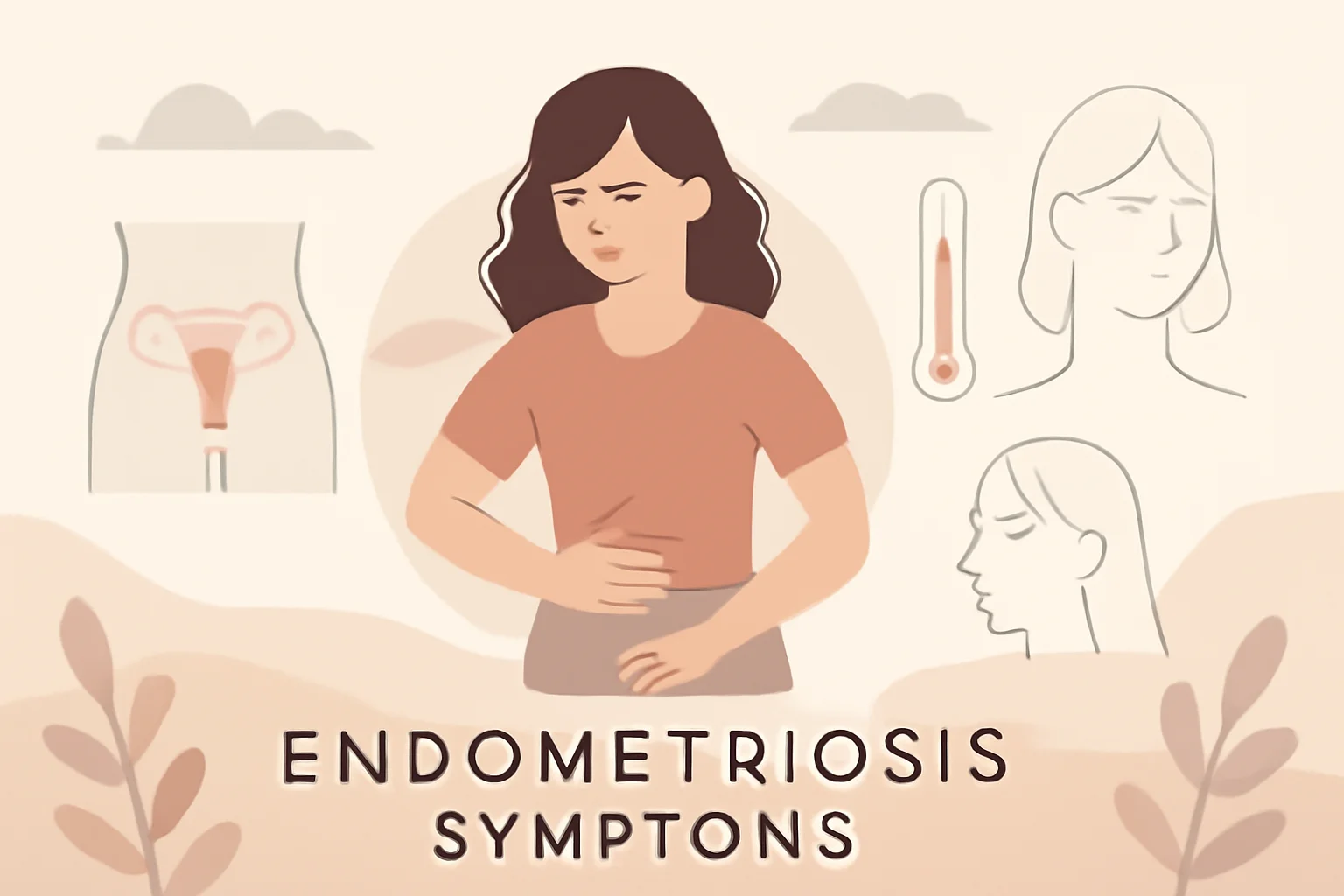
Symptoms of Endometriosis: Recognize the Signs in Time!
Endometriosis is a condition that affects the reproductive system of women and is unfortunately often overlooked or diagnosed late. In endometriosis, tissue similar to the uterine lining grows outside the uterus, leading to various problems. The consequences of the disease can manifest in many forms, ranging from painful menstruation to fertility issues. The prevalence of the disease among women is becoming increasingly common, and in many cases, the delay in diagnosis can exacerbate symptoms.
Endometriosis can impose not only physical but also emotional burdens on women, as chronic pain and fertility challenges can be significant sources of stress. However, with the right information, women can better understand the nature of the disease and prepare to seek medical help as soon as possible. The aim of this article is to detail the most characteristic symptoms of endometriosis, contributing to a more conscious management of the disease and the preservation of women’s health.
Painful Menstruation
One of the most common and characteristic symptoms of endometriosis is painful menstruation, known in medical terms as dysmenorrhea. Most women experience menstrual pain, but in the case of endometriosis, this pain can be much stronger and more persistent. The pain can occur not only during menstruation but also before and after, causing significant discomfort in daily life.
The source of the pain lies in the fact that endometrial tissues are located on the outside of the uterus, where they cannot function normally. These tissues also respond to hormonal changes in the menstrual cycle and can cause bleeding, leading to inflammation and irritation of the surrounding tissues. This inflammation can trigger pain, which is often crampy, sharp, or stabbing in nature.
The severity of painful menstruation can vary and differ from woman to woman. Some may only experience mild discomfort, while for others, the pain can become so unbearable that they are unable to carry out their daily activities. Monitoring the level of pain and the intensity of symptoms can help doctors in diagnosing and selecting appropriate treatment options.
It is worth noting that painful menstruation does not always mean that someone suffers from endometriosis. Other disorders, such as uterine fibroids or ovarian cysts, can also cause similar symptoms. It is important to seek medical help if the pain is persistent and severe to receive the appropriate diagnosis and treatment.
Chronic Pelvic Pain
Another noteworthy symptom of endometriosis is chronic pain that occurs in the pelvic area. This pain can manifest not only during menstruation but at any stage of the cycle and is often present persistently. Pelvic pain can worsen as the disease progresses and can affect daily life.
The source of pelvic pain is the inflammation and the positioning of tissues associated with endometriosis. The inflammatory tissues can irritate surrounding nerves and tissues, leading to pain. The level of pain can vary and can be bothersome for many women, especially if the pain is constantly present.
Additionally, pelvic pain often associates with other symptoms, such as painful intercourse or gastrointestinal issues like bloating or constipation. Painful intercourse can also arise due to tension in the pelvic muscles, which is a consequence of the disease. This type of pain can often complicate maintaining relationships and can impose emotional burdens on women.
The treatment of chronic pelvic pain can be complex, and in many cases, medical intervention may be necessary. Pain relievers and anti-inflammatory medications can help alleviate symptoms, while hormonal treatments can reduce inflammation and pain. Alongside medical care, treatment for pain may include physical therapy and appropriate lifestyle changes.
Fertility Issues
One serious consequence of endometriosis is the development of fertility issues. The disease affects the functioning of the female reproductive system and often complicates the desire to conceive. Among women suffering from endometriosis, the occurrence of fertility difficulties is higher than in the average population.
Endometriosis can impact the ovaries, uterus, and fallopian tubes. The scar tissue and inflammation caused by the disease can hinder the meeting of sperm and egg, thereby affecting fertilization. Additionally, the inner layer of the uterus may also be affected, which can impede the implantation of a fertilized egg.
The treatment of fertility issues often requires a complex process, and various options are available for women. Hormonal treatments, surgical interventions, or artificial insemination can help achieve pregnancy. It is important for women suffering from endometriosis to consult with their doctors to understand their situation and the possible treatment options.
Fertility issues can also impose psychological burdens, as having children is an important life stage for many women. Seeking support, whether professional or from friends, can help women cope with these difficulties.
Note: This article does not constitute medical advice. Always consult a doctor for health issues and follow their recommendations!

